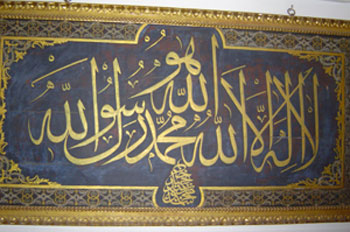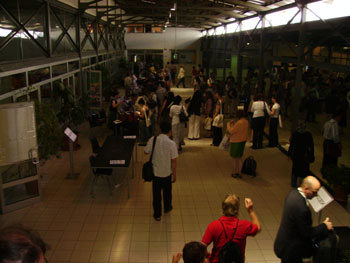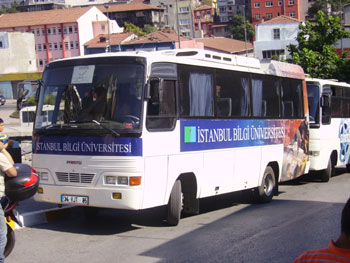Crossroads 2006
From July 19th till July 23th, the 6th ACS Crossroads in Cultural Studies conference took place in Istanbul Bilgi University.
There was no specified theme but the aim was “to construct an intellectual space for the international cultural studies community to meet, to give voice to different cultural orientations and researches…â€. This was reflected in participants from over 50 countries coming together in more than 200 sessions. Within this overload of themes and papers there was a question, however, that was central throughout the conference: “Where should Cultural Studies go?†Of course, not one single answer was formulated to this question, but it is clear that there is a need to build the Association for Cultural Studies as “an international association truly capable of expressing and responding in practical ways to the real diversity and the urgency of cultural studies work around the world†as was expressed by Meaghan Morris.

A very interesting Key Note Address on the Critique of Popular Culture was provided by Partha Chatterjee from the Centre for Social Sciences at Calcutta Columbia University. He stated that there is an old and well-known mode of critique of popular culture from the standpoint of the enlightened and rational premises of modernity. With recent developments in anthropology and in literary and cultural studies, this mode of criticism has been discredited. The emphasis has shifted to more sympathetic, even celebratory, studies of popular culture that seek to discover the distinctive concepts and logics that order the world of the popular. Chatterjee focused on the question: Is there still room for a critique of popular culture? His talk proposed a shift in focus from concepts and logics that distinguish the elite-modern from the popular-traditional and looked instead at what happens with disciplinary practices in popular cultural productions. Looking at examples from cinema, photography and other visual productions in contemporary Indian popular culture, Chatterjee suggested alternative modes of making judgments and distinctions within the world of the popular.
In our own paper (Soetaert, R. & Rutten, K. – Confronting repertoires about Art. Confronting Discourse Analysis and Cultural Studies) we introduced a curriculum problematising and thematising the concept of literacy and culture. We focus our research on the discourse and culture in/ of particular disciplines. We argued that students should become aware of different repertoires and cultural models in order to thematise how we talk about art. In our project we focused on one aspect of our project: how “artspeak†(Harris) and “arguespeak’ (Graff) is represented in fiction (examples taken from Hollywood movies, art-movies and the genre of the academic novel). We confronted these narratives with narratives of students (interpretative conflicts). As a research methodology we introduced the concepts of representation (from Cultural Studies) and interpretative repertoires (from Discourse Analysis). From an educational perspective we introduced the curriculum as representation and rhetoric.

